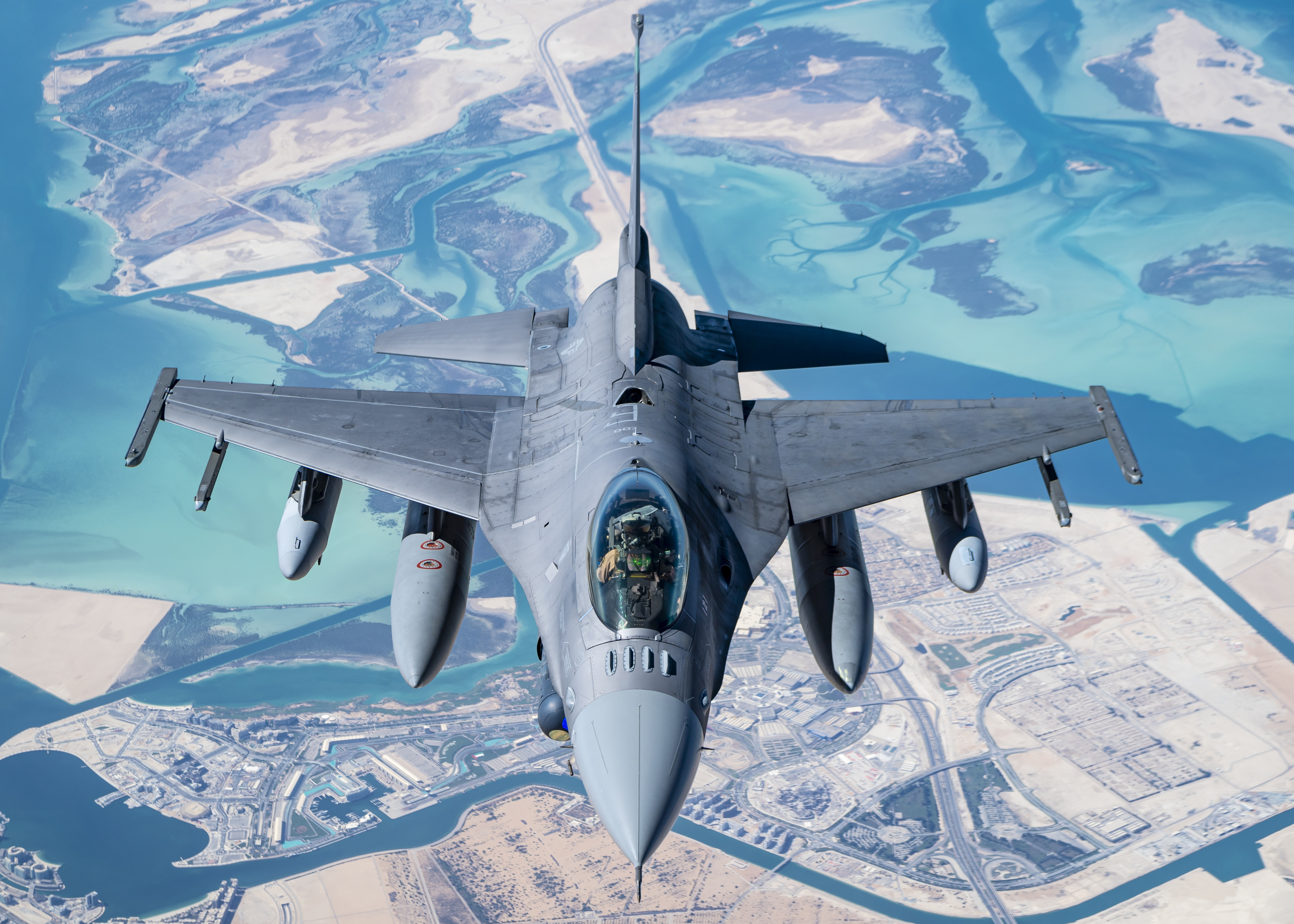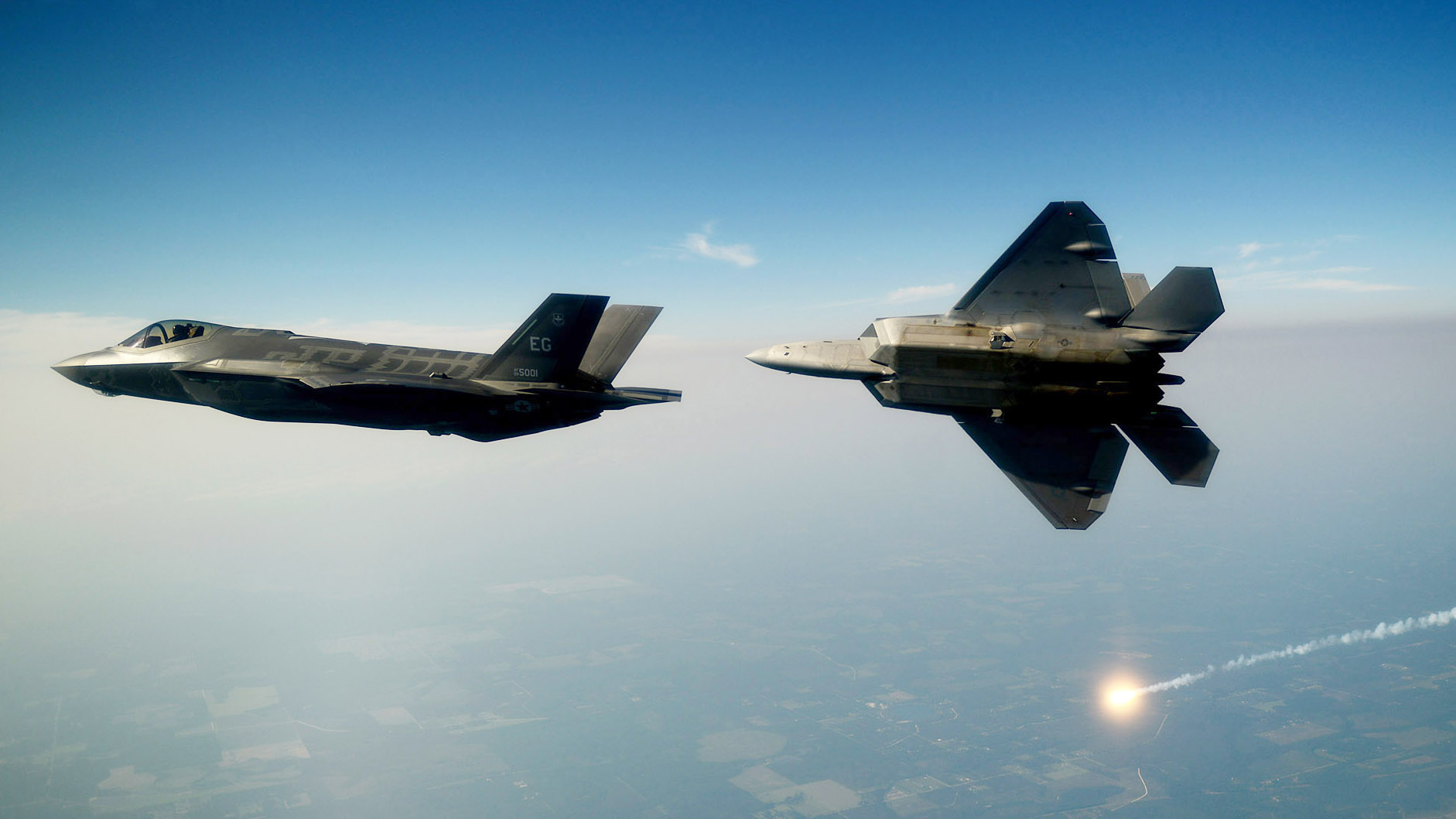The U.S. Air Force is planning for the fighter at the core of its multi-faceted Next-Generation Air Dominance program, or NGAD, to come with at least a degree of multirole capability, being able to engage ground targets, as well as aerial threats. The service is also reportedly looking at fielding long- and shorter-range versions of the aircraft, optimized for operations in the Indo-Pacific and European theaters, respectively. These are the latest details to emerge on the secretive NGAD program, at least one demonstrator for which has already begun test flights.
More information was revealed during yesterday’s House Armed Services Committee hearing regarding the Air Force’s Fiscal Year 2022 budget request. Testifying before the committee were Air Force Chief of Staff General Charles Q. Brown Jr. Meanwhile, remarks from retired General James M. Holmes, the former head of Air Combat Command, were reported the same day by Air Force Magazine.

General Brown described the NGAD, or at least, the central fighter component within what’s expected to be a ‘system of systems,’ as an aircraft with a primary air dominance mission. This fits in with its broad brief to ultimately replace the Air Force’s relatively small fleet of F-22A Raptor stealth fighters, which are now being slated for retirement in the coming decade. However, the Air Force boss also wants the fighter to have some “multirole” functions, specifically, the ability to attack targets on the ground, “to ensure, one, that it can survive, but also to provide options for our air component commanders and for the Joint Force.”
That sounds, in fact, not unlike the F-22’s current mission spectrum which, although biased toward high-end air superiority, also includes attacking ground targets with precision-guided munitions. Indeed, so far, the Raptor has only ever used its weapons in combat during strikes on ground targets in the Middle East. The ability to fight its way into contested airspace through an anti-access/area-denial (A2/AD) umbrella is also something that will be required of the NGAD, so it makes sense that the aircraft would be able to engage targets both in the air and on the ground, where suppressing and destroying advanced surface-to-air missiles would be of particular importance.
However, and as The War Zone has explored in the past, the Air Force wants its F-22 successor to offer specific advantages over the current jet, in particular, longer range. The Raptor is currently hamstrung by its combat radius, limiting its potential value in a conflict against China, or other contingencies in the Indo-Pacific region. For its part, the F-35 stealth fighter, too, suffers from a widely reported lack of range for these kinds of conflicts, although it has longer range than many of its counterparts. Fighting against a peer adversary like China with existing fighter aircraft would make their supporting tanker aircraft especially vulnerable, an issue the USAF is acknowledging itself and one we explored in-depth years ago. So it’s not surprising the NGAD is supposed to offer substantially longer range than the F-22.
At the same time, Brown confirmed that he wants the NGAD fighter component to carry an increased weapons load compared to the F-22. While this sounds like a reference to expanded internal weapons carriage perhaps aided by using smaller munitions, there has also been much talk in the past about using loyal wingman drones to expand the number of weapons available to the NGAD’s pilot. Using internal carriage to reduce its radar signature, the F-22 typically carries six AIM-120 AMRAAMs, or two AMRAAMs and two 1,000-pound GBU-32 Joint Direct Attack Munitions (JDAM), or two AMRAAMs and eight Small Diameter Bombs (SDB), plus a pair of short-range Sidewinder missiles in its side bays. The NGAD will have to do better than this.

As for retired General Holmes, he reportedly brought up the idea that the Air Force might consider fielding two distinct versions of the NGAD fighter component, one optimized for long-range/heavy-payload missions of the kind that would likely be required in the Indo-Pacific region, as well as one with shorter range sufficient for the European theater of operations.
The pros and cons of this approach are interesting to contemplate. If the ‘European’ NGAD was notably smaller, that could make it cheaper to buy and operate, but that would also entail two distinct production versions, with potentially different support infrastructure and a knock-on effect on concepts of deployment and operation. Furthermore, having two distinct versions of NGAD would have considerable logistical and sustainment implications, good and bad. Although it would be hoped that the two designs would share a high degree of commonality, experience with the F-35 shows this is not always the case. Designed using modern techniques with an absolute focus on modularity could impact this issue positively, though, and the aircraft’s subsystems would likely be identical, reducing risk and increasing commonality.
It seems unlikely that the Air Force would opt for a ‘low-end’ version of NGAD with reduced sensors and/or stealth, but that’s a possibility, too. The most likely scenario here is that a highly modular design will offer ‘two fighters out of one.’ This can be made possible by using different wings and a common center fuselage, possibly with the ability to insert a plug to extend its size, for example. A more modular design approach to the development of the underlying structure might also allow for future scaling up and down of a central design, something the Air Force has expressed interest in doing with future unmanned platforms. The downside, however, is the Air Force ending up with discrete NGAD fighter fleets that are not necessarily tailored to different theaters: what happens if a commander in the Indo-Pacific needs more fighter capacity, quickly, and is forced to call upon European-optimized jets? Unless the NGAD is able to be reconfigured in short order, they would be getting a less than ideal version to work with. That isn’t a deal-breaker, but it is something to consider.
Overall, this thinking has parallels with the so-called ‘Digital Century Series’ approach that was espoused by Will Roper, the former Assistant Secretary of the Air Force for Acquisition, Technology, and Logistics. This envisages rapid development of new fighter jet designs, potentially at a rate of once every five years. While this is potentially fraught with difficulties, as we have discussed before, it was always expected to play a part in the NGAD program, and Holmes’s words seem to reinforce this.
The new details about NGAD also might help us understand what General Brown had in mind earlier this year when he introduced the idea of an all-new fighter jet design to replace the Air Force’s large fleet of hard-worked F-16s. As part of an overarching study into the service’s future force mix, one option is a ‘clean-sheet design’ to replace the F-16 and potentially disrupt plans to buy the full 1,763 copies of the F-35A that were originally planned. A shorter-ranged version of NGAD that is also stripped of some of its more exotic systems is a possibility now.

Overall, it seems clear that the NGAD is still seen primarily as a Raptor successor for the high-end fight, but it will also be able to attack ground targets and might be fielded in a shorter-range/lower-payload version for Europe, where missions are likely to be of shorter. duration
It could also lend itself to export, which might be trickier in the case of the standard NGAD. Efforts to sell the F-22 to Japan were frustrated, due to lawmakers’ resistance to sharing its advanced technologies. At one point, there was talk of developing an F-22/F-35 hybrid design for Japan to get around this problem and that, too, might offer another possible window into the options for two different types of NGAD fighter.
If an ‘NGAD light’ variant were built to replace the F-16, it could benefit from an entire ecosystem of capabilties that are being developed to work in concert with NGAD. These include new weapons, new communications architectures, new sensor systems, and especially, unmanned aircraft that will work alongside these fighters.

All this perhaps leaves the F-35 in an even more precarious position. At the one end, plans for the F-35 to be acquired in large numbers to drive down costs could be threatened by a clean-sheet F-16 successor, possible a variant of NGAD, which would likely offer lesser capabilities but with a smaller price tag, and could be attractive to foreign customers. At the same time, if the NGAD is also able to take on the kinds of air-to-ground and defense-suppression missions in contested environments that were previously envisaged for the F-35, then that program could face another challenger, at least within the AIr Force.
For the time being, however, we still know very little about the NGAD or a potential F-16 successor for the Air Force. Gradually, some tantalizing details are reaching us about the NGAD, but the program will likely contain a few more surprises along the way.
Update, June 18, 12:45 pm PST: This article was updated to reflect the fact that it was General James M. Holmes and not General Mark D. Kelly who told Air Force Magazine about the potential for two variants of NGAD.
Contact the author: thomas@thedrive.com
